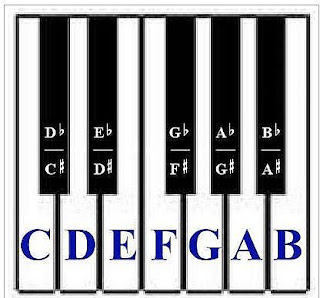The Differences (and Similarities) Between Sharps and Flats
Sharps and Flats are used to denote the movement up and down in pitch from a Major-sounding tone.
Sharp

Flat 
A Sharp occurs when you raise a tone in pitch by either one fret or move up from a white key by one black key on the piano.
A Flat denotes one tone lower by dropping down a fret or by dropping down one black key on the piano.
Determining Sharps and Flats
The rule for determining the name for the Sharpened or Flattened note is by looking at which note it is right next to in the musical alphabet. For example, a D lowered would be a Db and a C raised is a C#. Where it gets tricky, and where many new music students get hung up is understanding that both Db and C# refer to the same pitch. Here’s how–
It’s easiest to visualize the relations of the Sharps and Flats to Major notes by looking at the keys on a piano keyboard. A keyboard is a very linear instrument and stripes out the sequence of notes very intuitively. Notice how Sharps and Flats are always present on each black key, yet they go by two names - the Sharp form and the Flat form.
(*Note the exception to this rule for the B-C keys and E-F keys, as no black keys exist between them)
